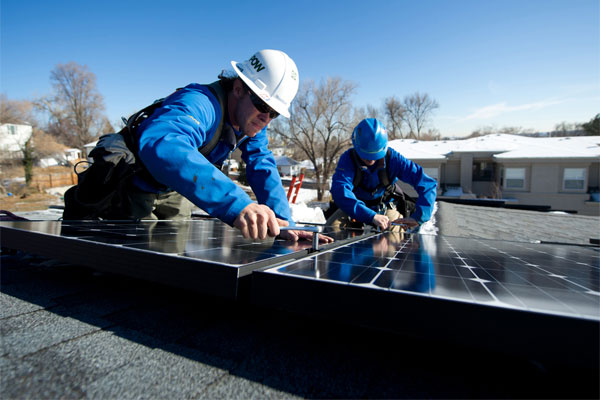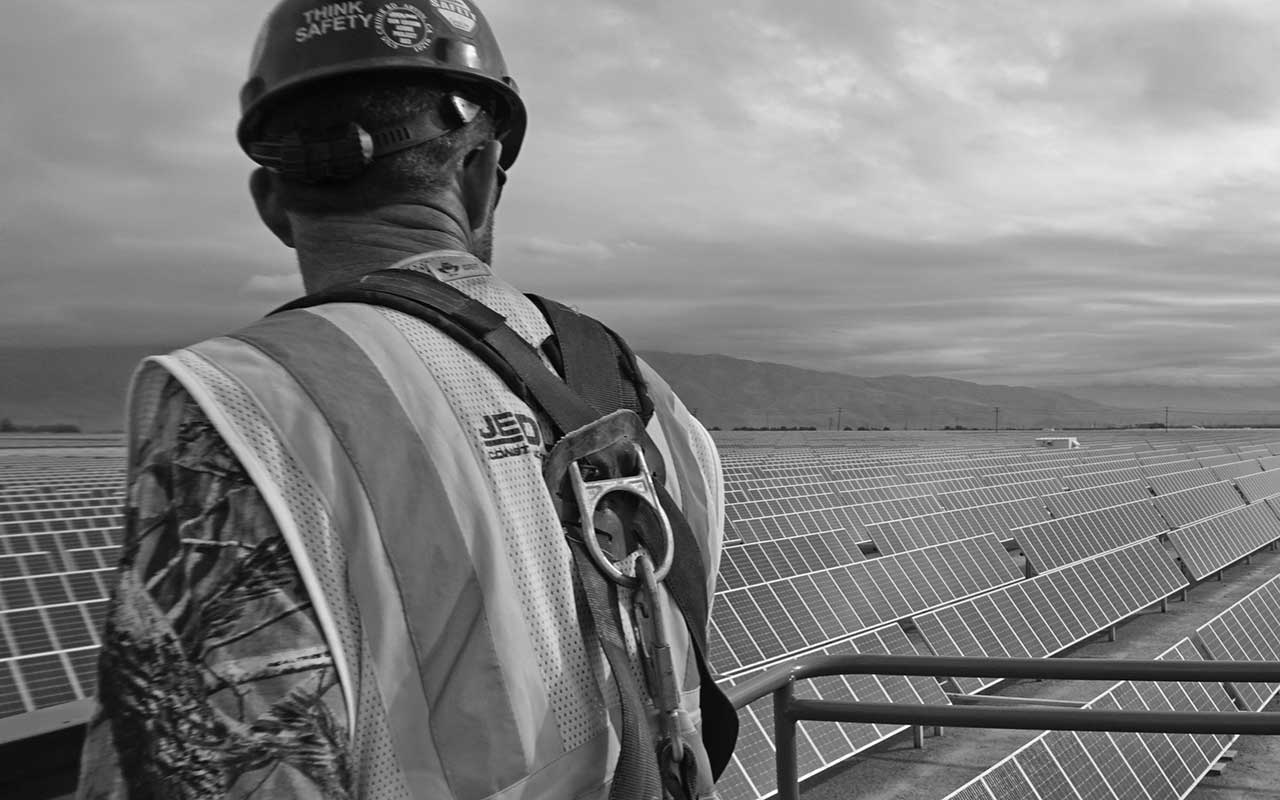After a cataclysmic 2018—which began with Trump tariffs on imported equipment and got worse when China abruptly ended subsidies for solar installations—solar companies are facing 2019 with continuing cost constraints but with a strong promise of increasing demand.
Solar photovoltaic (PV) panel manufacturers lost about 40 percent of their market value and had to sell below cost to compete with Chinese suppliers, customers enjoyed the benefits of the struggle.

Two Lighthouse Solar employees install microcrystalline PV modules on top of a Colorado townhome /Arizona Capitol Times
Solar installers and homeowners alike—enjoyed the lucrative market which saw another record year of PV installations.
Price declines continue to pressure panel manufacturers, but its still good news because only about a 13 percent drop in cost is forecasted in 2019 by BNEF; against declines that often exceeded 30 percent in previous years.
That’s going to provide some breathing room for manufacturers as they step up efforts to cut costs.
While manufacturers’ stocks may not be in favor today, the demand for solar farms that use their modules has never been hotter.
Another good news, is the fact that mounting investor confidence in U.S. residential installers like Sunrun Inc., which more than doubled this year, and Vivint Solar Inc., which gained about 9 percent, remain strong.
Switching gears.
The big exception to any story about the industry getting better is, obviously, climate change.
It’s real, the trajectory is bad as we’re on track for 3.1 to 3.7ºC of warming by 2100 unless current government policies change. But avoiding total hopelessness on the issue requires paying attention to those areas where things are getting better.
Interestingly, the declining cost of solar installations is fueling a rapid increase in adoption.
Solar is now cheaper per megawatt hour than gas or oil, though better batteries are needed if the two are to become primary sources of energy.
What next?
Unfortunately though, cheap solar is not enough to triumph over global warming.
For one thing, the technology has to be cost-competitive with coal and natural gas worldwide to keep global emissions down to reasonable levels.














Comments